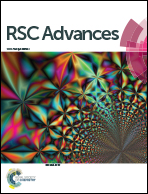Intrinsic quantum dot based white-light-emitting diodes with a layered coating structure for reduced reabsorption of multiphase phosphors†
Abstract
A white-light-emitting diode (WLED) with a layered coating structure was fabricated by using intrinsic green-emitting and red-emitting CdSeS/CdS/ZnS core–multi-shell alloyed quantum dots as light conversion materials. The layered coating structure could efficiently reduce the reabsorption problem, and the as-prepared WLED exhibited good color rendering properties, providing a promising solution for the fabrication of intrinsic QD based WLEDs with reduced reabsorption.


 Please wait while we load your content...
Please wait while we load your content...